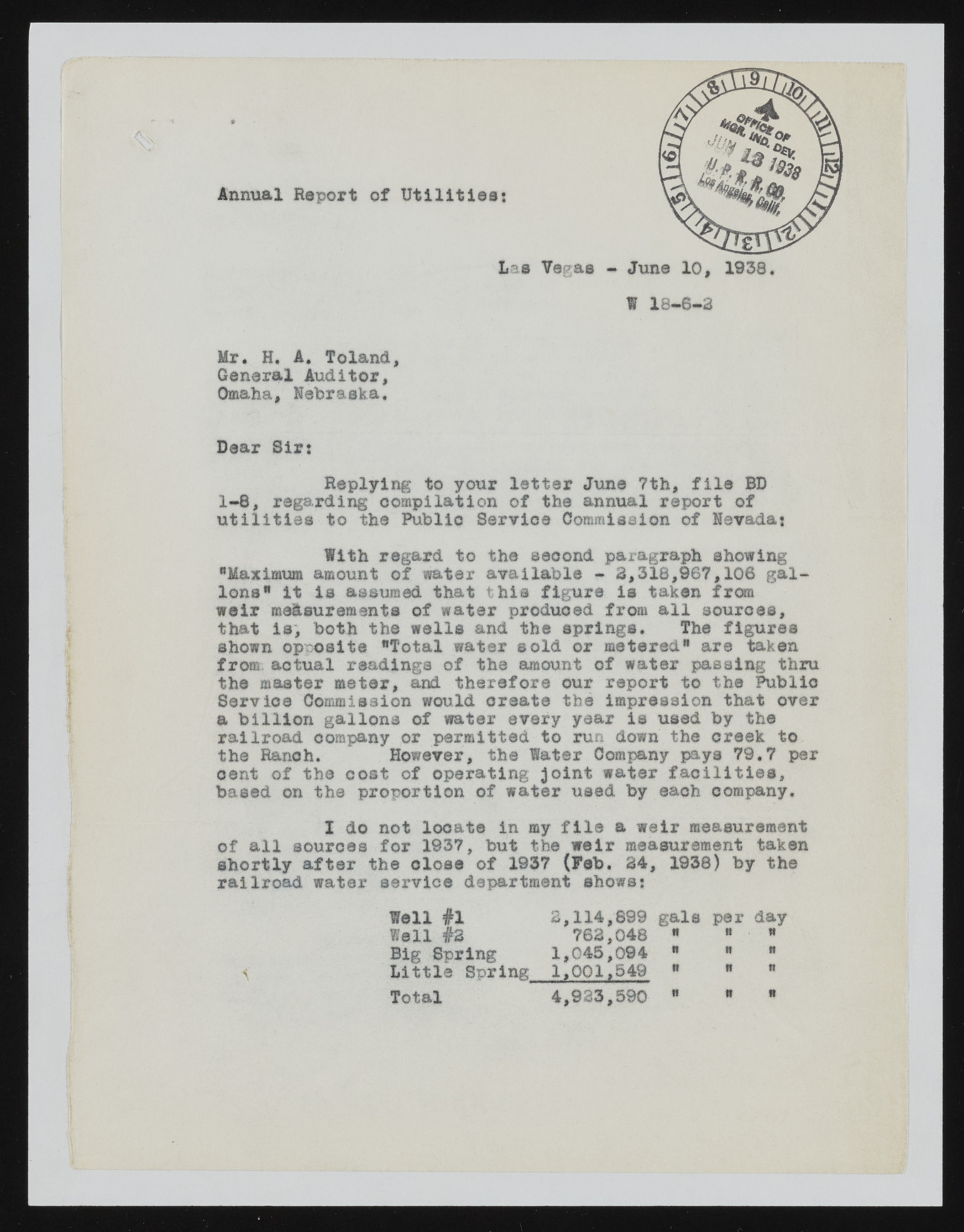Copyright & Fair-use Agreement
UNLV Special Collections provides copies of materials to facilitate private study, scholarship, or research. Material not in the public domain may be used according to fair use of copyrighted materials as defined by copyright law. Please cite us.
Please note that UNLV may not own the copyright to these materials and cannot provide permission to publish or distribute materials when UNLV is not the copyright holder. The user is solely responsible for determining the copyright status of materials and obtaining permission to use material from the copyright holder and for determining whether any permissions relating to any other rights are necessary for the intended use, and for obtaining all required permissions beyond that allowed by fair use.
Read more about our reproduction and use policy.
I agree.Information
Digital ID
Permalink
Details
More Info
Rights
Digital Provenance
Publisher
Transcription
Annu&l Report of U t ilit ie s : m La® Fegae - June 10, 1938, W 18-6-3 Mr. H. A. Toland, General Auditor, Omaha, Nebraska. Dear S ir: Replying to your le tte r June ?th, f i l e BD 1-8 , regarding compilation of the annual report of u t ilit ie s to the Public Service Commission of Nevada: With regard to the second paragraph showing “Maximum amount of water available * 3,318,967,108 g a llons* it is assumed that th is figure is taken from weir me&suremsmts of water produced from a l l sources, that is ; both the w ells and the springs. the figures shown opposite “Total water ©old or metered* axe taken from actual readings of the amount of water passing thru the master meter, and therefore our report to the Public Service Commission would create the impression that over a b illio n gallons of water every year is used by the railroad company or permitted to run down the creek to the Ranch. However, the la te r Company pays 79.7 per cent of the cost of operating join t water f a c ilit i e s , based on the proportion of water used by each company. I do not locate in my f i l e a weir measurement of a l l sources for 1937, but the weir measurement taken shortly a fte r the close of 1937 (Feb. 84, 1938) by the railroad water service department shows: Well #1 2,114,899 gals per day Well #3 782,048 « « » Big Spring 1,045,094 « « » L itt le Spring 1,001,549 * « » Total 4,933,590 * B I

